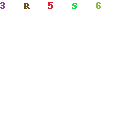Upon being handed a copy of the book, I flipped it over to find out what it was about. From the back cover:
"After their zoo was bombed, Polish zookeepers Jan and Antonia Zabinski managed to save over three hundred people from the Nazis by hiding refugees in the empty animal cages. With animal names for these "guests", and human names for the animals, it's no wonder that the zoo's code name because "The House Under a Crazy Star."
(Now that I've read the book I don't think the person who wrote the description had read the book in its entirety but their description did pique my interest considerably. And it is mostly accurate . . . except the part about cages which puts a picture in your mind's eye that isn't accurate.)
The Zookeeper's Wife
Over all, the Zabinksi's helped save the lives of over 300 people. These three hundred people came and went silently and secretly, frequently only using the zoo's villa as a temporary stopping point as they were redirected to other safe locations. In between "guests", Antonio was a wife and a mother, caring for her family and her home during lean and uncertain times. Although this is a story set in the midst of a war, it focuses a great deal on the animals which were housed at the zoo and the Zabinski love for them. I have never really thought about the role that animals played during the war and that aspect was interesting to learn of. For instance, I did not know that the Nazis were not only interested in "purifying" the human race but also the animal kingdom, hoping to breed animals "back to their original conditions" so to speak. They dreamed of hunting and riding the purest bred horses because purity is important when you are so pure yourself, you know. (I jest. Just wanted to make sure you knew that.)
All throughout the book, Walter would drop information about the Nazis or war conditions in Poland that I found particularly intriguing. As another example, she told of a Mrs. Walter who ran "a kind of charm school", instructing Jewish women on how to look, act, speak and cook like their Polish counterparts.
"Hair belonged off the forehead, neatly reined in or swept up into more Aryan styles, while bangs, curls, or frizz might raise suspicion. Black hair required bleaching to dull its glitter, but shouldn't become implausibly pale. When it came to choosing clothes, Mrs. Walter advised: "Avoid red, yellow, green or even black. The best color is grey, or else a combination of several inconspicuous colors. You must avoid glasses of the shape that's now fashionable, because they emphasize the Semitic features of your nose." And some outstanding Semitic noses required "surgical intervention." Fortunately she worked with Polish surgeons (such as the eminent Dr. Andrzej Trojanoswki and his colleagues) who reshaped Jewish noses and operated on Jewish men to restore foreskins, a controversial and clandestine surgery with an ancient tradition." (Chapter 25, pp. 221-222)
I had no idea that that had been done!
Our book club group's chief critique of the book was in the writing style. There was general agreement than Ackerman's style left a lot to be desired. She writes as a journalist trying to tell a long and compelling story and that creates for a very choppy reading experience. Ackerman had a tendency to bounce from narrative, to documentary-style quotes which was distracting. Also, she did not follow a strictly linear time frame when laying out the Zabinksi's story which left many of us questioning where we were in the narrative as related to their personal life experiences. However, despite this complaint, there was not a person in our book club who failed to enjoy the read on the whole.
I feel safe in recommending this book to others. It is not an intense war story by any means. It is fairly tame and mild and I think that is appropriate given the fact that the tale revolves around a single family and their life. There is no language or violence (other than discussion of air raids and gun shots) but nothing gratuitous in the least. This is an informative and interesting read and I'm glad to have had it recommended to me.
A few additional notes:
You can watch the entire short film/documentary Safe Haven: The Warsaw Zoo (for free!) by clicking on the title there. I can't say that it offers anything different than the book but you get to see some more pictures and that part is fun.
Anyone reading the book might venture a guess that this book would be turned into a movie. If you guessed so, you would be correct! It will be made into a movie that is marked for a 2015 release. I have a date with a dozen friends to go and see it. And I look forward to that!








4 comments:
I've heard good things about this. Sounds intriguing!
Thanks for the recommendation, Carrie. I am not normally a fan of "war stories," but this one compelled me to add it to my list.
I hadn't thought about it, but you are right. The use of "wife" in the title is usually a red flag.
I very much sympathize about writing style. Not all journalists know how to write long form well. (Winston Churchill comes to mind as a master of narrative.)
It's weird. I read this so fast and don't remember much except that I didn't like it. I feel like I need to read it again.
Post a Comment